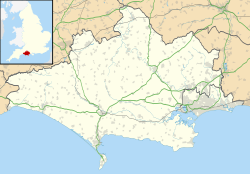| Bournemouth Gardens | |
|---|---|
 A postcard from the 1910s showing the Upper Gardens. The building in the background is the Mont Dore Hotel, now Bournemouth Town Hall. The tower to the right is St. Andrew's Church. | |
| Type | Landscaped garden |
| Location | Bournemouth, Dorset, England |
| Coordinates | 50°43′2.53″N01°52′33″W / 50.7173694°N 1.87583°W |
| Area | 3 kilometres (20.5 hectares) |
| Opened | 1840 |
| Website | www |
Bournemouth Gardens are Grade II listed gardens in the town of Bournemouth, Dorset, England. Created in the nineteenth century, the gardens follow the towns eponymous River Bourne three kilometres from the historic boundary with Poole south-eastwards into Bournemouth Town Centre.
Contents
- History
- Coy Pond Gardens
- Upper Gardens
- Central Gardens
- Lower Gardens
- Events
- Amenities
- Gallery
- References
The Gardens are home to a number of significant Bournemouth landmarks and listed buildings such as; the Town Hall, the War Memorial, St. Andrew's Church and the Pavilion Theatre.
Bournemouth Gardens have been Green Flag Award winners since 1999.











